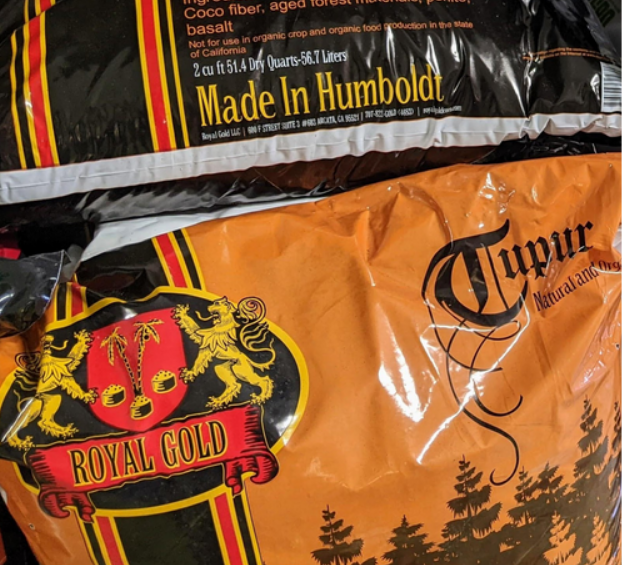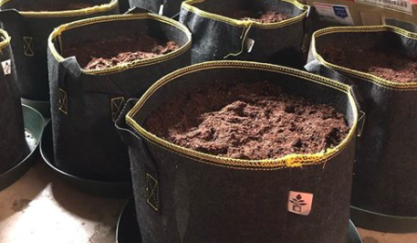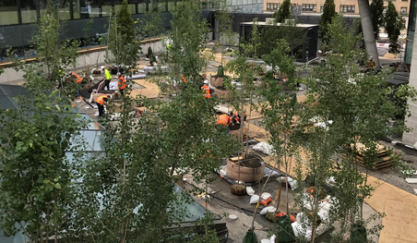The Best Hydroponic Growing Medium
The Best Hydroponic Growing Medium
For a consistent harvest every time, it’s hard to beat hydroponics. Having complete control of everything your plant is receiving is a sure fire way to get huge yields of high quality product.
The thing is, hydroponic growing can be a bit finicky. There are countless options for each element, and one mistake could cost you your harvest. With so much information online, it can be hard to cut through the noise and get the information you need.
So, with this blog post, we’re going to set some things straight regarding the best medium for hydroponics.
What’s A Medium In Hydroponics?
While all hydroponic setups are different, they all have one thing in common: they’re growing plants without soil.
The soil is replaced with a hydroponic growing medium which supports the plant and manages the ratio between oxygen and water.
There are almost as many hydroponic mediums as there are strains you might have in your grow house.
So let’s get into the details and see which hydroponic grow medium is best for you, and which one to avoid.
Rockwool
Let’s begin with an old classic that’s finally falling out of favor. Rockwool has been around since Cheech & Chong were in their heyday. It’s made by melting rock and then spinning it into long, thin fibers. Think fiberglass, but made out of molten rock.
Although that sounds pretty metal, this stuff is nasty. Those tiny fibers will irritate your skin, eyes, nose, mouth, respiratory passages, and anything it comes into contact with. To mitigate this, you need to soak the rockwool as soon as it comes out of the packaging.
On top of that, it’s not friendly to the environment in any way. The manufacturing process uses a ton of energy, and it essentially turns two natural products into one synthetic product that will never break down.
The pro’s of rockwool can be found in pretty much every other hydroponic media, so it’s not even worth listing them here.
Instead, let’s focus on some healthier alternatives to rockwool.
Expanded Clay Pellets
As the name suggests, this is clay that’s been expanded into spheres filled with air pockets. The result is a porous material that drains well.
Thanks to the neutrality of clay, expanded clay pellets won’t leach nutrients into the water and have a neutral pH. They are also endlessly reusable, which saves you money while having less of an impact on the environment.
One of the observed downsides of clay pellets is their weight. These things are heavy, and might not be suitable for your setup if it’s on the flimsy side. Luckily this can easily be mitigated by adding support in the right places.
While good drainage is a good thing, too much drainage is not. Expanded clay pellets flirt with this line, as many growers have noted that the roots of their plants dry out too quickly.
A way around this is to use expanded clay pellets at the bottom of your hydroponic trays to improve the drainage of your system, but grow your plants in another medium that has a bit more water holding capacity.
Depending on where you source your pellets, they can be a result of strip mining, which is devastating to the environment. This is mitigated somewhat by the reusable nature of clay pellets, but it’s something to consider anyway.
Coco Coir
Coco coir is a relatively new player in the hydroponic growing medium world. It’s made up from the husk of coconuts, something that would otherwise be a waste product.
Coco coir is naturally designed to protect and nurture young seedlings in nature, so transferring these qualities to your hydroponic setup is a great idea.
 They also manage the ratio of water and air that’s available to the plants roots, preventing your plants from drowning or drying out. It must be noted that some gardeners have found that coco coir holds onto water a bit too much, which results in drowned plants. So keep an eye on this if you choose coco coir.
They also manage the ratio of water and air that’s available to the plants roots, preventing your plants from drowning or drying out. It must be noted that some gardeners have found that coco coir holds onto water a bit too much, which results in drowned plants. So keep an eye on this if you choose coco coir.
Or line the bottom of your trays with expanded clay pellets for their superior drainage, and then put coco coir on top for its excellent water retention qualities.
Perlite
Perlite has been used as a soil amendment for ages, but did you know it’s also used as a hydroponic growing medium?
Perlite is volcanic rock that’s filled with many tiny air bubbles, the result of the water inside evaporating into steam as the rock heats up. The result is a very light and porous rock that’s used in gardens around the world.
Perlite is well known for its air retention properties, so you won’t have to worry about drowning your roots if you choose perlite. All this air in the product can be a downside, too, as perlite is susceptible to being washed away if you’re not careful.
 It also does not hold onto any water at all, so make sure your roots aren’t drying out in your perlite. For these reasons, perlite is seldom used on its own, and is most often mixed with soil, coco coir, or vermiculite.
It also does not hold onto any water at all, so make sure your roots aren’t drying out in your perlite. For these reasons, perlite is seldom used on its own, and is most often mixed with soil, coco coir, or vermiculite.
The mining of perlite is damaging to the environment, and fine perlite dust particles can be a major respiratory irritant, so take these into account when you’re making your decision.
Ready-Mixed Coco Perlite Blends
Many soiless mixes are available pre-blended with coco, perlite, coco fiber, aged forest materials, basalt, and any number of different soiless mediums. Which blend you choose depends on what you’re growing. For example, for high-value plants, you could choose a soiless mix blended specifically for medical cannabis.
 The most commonly used mix is a blend of coco and perlite, designed to achieve the ideal balance between water content and aeration. This also makes these blends one of the most user friendly growing mediums, as they’ll be able to protect your plants somewhat from any mismanagement from inexperienced growers.
The most commonly used mix is a blend of coco and perlite, designed to achieve the ideal balance between water content and aeration. This also makes these blends one of the most user friendly growing mediums, as they’ll be able to protect your plants somewhat from any mismanagement from inexperienced growers.
Which Medium Will You Choose?
The growing mediums above are just a small selection of all the hydroponic growing mediums used today. These are the most popular thanks to the benefits outlined in each section.
Spring Pots work great with Coco, Perlite, Coco Perlite Blends, Clay Pellets, and most any other hydroponic substrate you can think of.
It’s important to remember that your growing medium is only a small part of your hydroponic setup. None of the mediums above are going to result in a perfect grow by themselves.
In fact, one of the oldest hydroponic mediums is sand. While it’s not used much today, it’s proof that many strange things can be used as a growing medium if you get the nutrients, watering, light exposure, and all the other elements right.
That being said, experimentation is encouraged. Find what works best for you in your situation, and have fun while you’re doing it!











